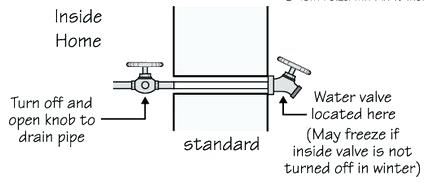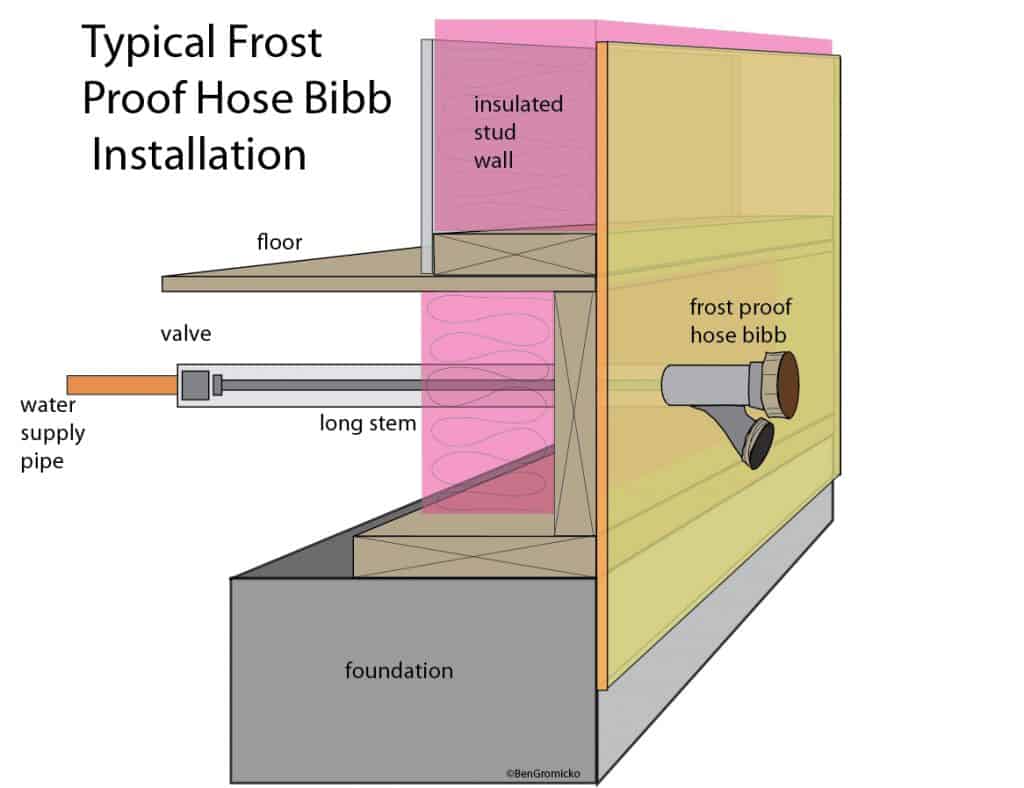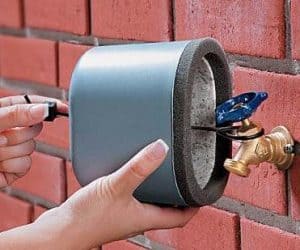Here in the Maryland/Pennsylvania area, we occasionally are blessed during the Winter months with short periods of warmer weather like we have had this week. When this happens many of us often will get out our hoses to wash the road salt and filth off our cars and, in the process, reverse the winterization steps we (hopefully) took before freezing temperatures started setting into the region. If you did not winterize your exterior hose bibs in the Fall, perhaps you have been extremely lucky and have dodged a plumbing catastrophe so far! If you winterized properly, give yourself an “atta boy!” – just don’t forget to do it again! 🙂
In the winter in areas that experience freezing weather, it’s best to take some proactive measures to prevent frozen pipes. According to InterNACHI, the Plumbing-Heating-Cooling Contractors Association says that homeowners are five times more likely to file an insurance claim for water damage than they are for fire damage during the life of their homeowners’ insurance policy. Taking a few extra minutes after using your exterior hose bib and hoses to once again winterize them can save you hundreds if not thousands of dollars in potential damages to your home from frozen plumbing, burst pipes and fixtures, and resulting water damage they can cause! Follow these simple steps to protect your home:
- Locate all exterior faucets/hose bibs and disconnect any hoses, accessories, etc. and drain them for winter storage. Leaving water in hoses and accessories can damage them, too, once freezing temperatures return.
- Locate the shut-off valve on the inside of your home for each exterior faucet/hose bib and close the valve. If your exterior faucets/hose bib is a standard/stop-and-waste type, there should be an interior shut-off valve. If your exterior faucets/hose bib is a frost-free type, you may or may not have an interior shut-off valve. Frost-free type faucet/hose bibs have a specially-designed long stem that places the valve on the interior of the plumbing and often also have a vacuum breaker device that allows water to automatically drain out of the faucet/bib when turned off. For frost-free types, turning the faucet off is all that is needed, but it you can have an added measure of safety if you do all four steps anyway.
- Once the interior shut-off valve is closed, open the exterior faucet/hose bib to drain any water from it. If water continues to flow after a few seconds, double-check the interior valve from step #2 to ensure the valve is the correct one for that faucet/bib and to make sure it is completely closed.
- Optional step: add protection. You can add a foam insulation cover around the exterior faucet for extra protection if desired.

Standard Hose Bib Design

Note: Interior valve is optional and may or may not be present/installed. This diagram is without an interior shut-off valve.

